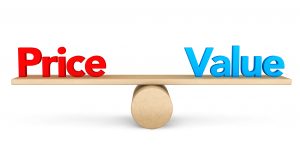It is never too early to get a jump start on tax planning. Why not start now and minimize your end of the year holiday stress? These tax planning techniques could help you reduce 2016 taxes.
Make Charitable Contributions
 Making charitable contributions is a great way to reduce your taxable income. The most common type of donation is a monetary contribution. Taxpayers are allowed to make tax deductible monetary contributions to qualified organizations in amounts up to 50% of adjusted gross income.
Making charitable contributions is a great way to reduce your taxable income. The most common type of donation is a monetary contribution. Taxpayers are allowed to make tax deductible monetary contributions to qualified organizations in amounts up to 50% of adjusted gross income.
Additionally, donating securities is an excellent way to support a charitable organization and avoid paying capital gains tax. When you donate securities that were held for more than one year, the contribution is deducted at fair market value and capital gains tax is avoided. This strategy works best with appreciated securities. Unlike monetary charitable contributions, donating securities to qualified organizations are limited to 30% of adjusted gross income.
Plan for Capital Gains
If capital gains are expected to be significant in 2016, consider selling some securities in your portfolio at a loss and generate capital losses. Capital losses are netted against capital gains to calculate the net taxable amount. Furthermore, if capital losses exceed capital gains, taxpayers may take a capital loss deduction up to $3,000 in the current year and carry forward the remainder to future years.
For example, if a taxpayer sells two securities, one with a gain of $50,000 and one at a loss of $65,000, a $3,000 capital loss deduction is allowed in the current year. The remaining $12,000 capital loss is carried forward to the following year.
Avoid Alternative Minimum Tax
The alternative minimum tax (AMT) has a significant impact on tax planning for high income individuals. AMT limits certain benefits and itemized deductions you might otherwise be eligible to receive. In years where taxpayers will be subject to AMT, one strategy is to accelerate income or defer tax deductions. This will help avoid AMT either in the current year or over multiple years.
For example, if you are subject to AMT and will not receive any benefit for state tax payments in the current year, defer those payments, if possible, to the next year when you’re not subject to the AMT.
If you’re not in the AMT for the current year, pay any state taxes before the end of the year, which may be due in April, to accelerate the year of the tax deduction. The IRS has the following tax tool to help determine if you might be taxed under AMT (https://www.irs.gov/individuals/alternative-minimum-tax-assistant-for-individuals).
Prepay Deduction Items
Another way to reduce taxable income in 2016 is to prepay 2017 real estate taxes, state and local income taxes, and other miscellaneous itemized deductions. Itemized deductions are recognized in the year they are paid, not the year they are due. If a taxpayer itemizes and has the option to accelerate 2017 expenses to 2016, this will increase deductions in 2016 which will decrease adjusted gross income.
Before implementing this strategy confirm you will not be subject to the AMT and your overall itemized deductions will be greater than the standard deduction. You should also consider itemized deduction limitations that may be greater due to higher income in 2016.
You may benefit from implementing at least one of these tax planning strategies. They are just a few of the methods to reduce taxable income and should be implemented on a case-by-case basis. At KRS we work with our clients to develop fluid tax plans and minimization strategies.






 How to prepare a budget projection
How to prepare a budget projection What is a Phantom Expense?
What is a Phantom Expense? Depending upon the version purchased, these packages will offer the user the ability to perform basic bookkeeping functions such as
Depending upon the version purchased, these packages will offer the user the ability to perform basic bookkeeping functions such as It is unlikely that any single action will result in a significant increase in cash flow, but the here are some areas where improvement may be achieved:
It is unlikely that any single action will result in a significant increase in cash flow, but the here are some areas where improvement may be achieved: